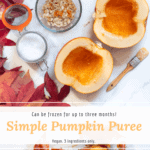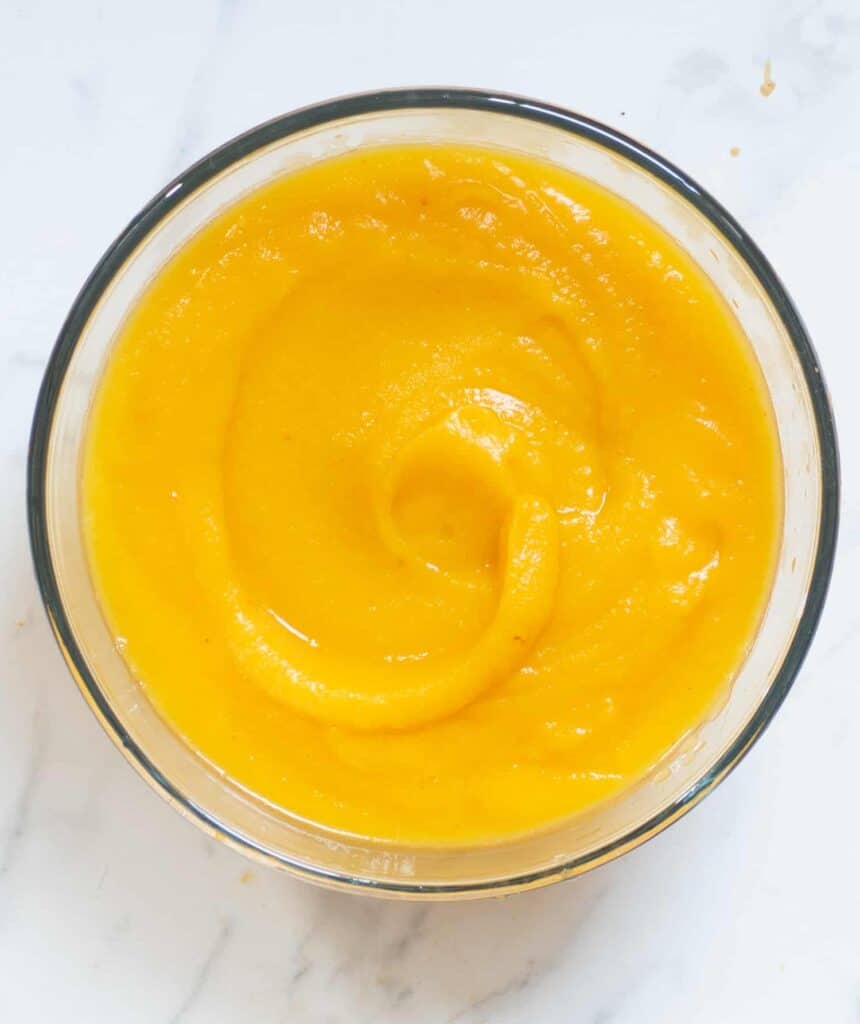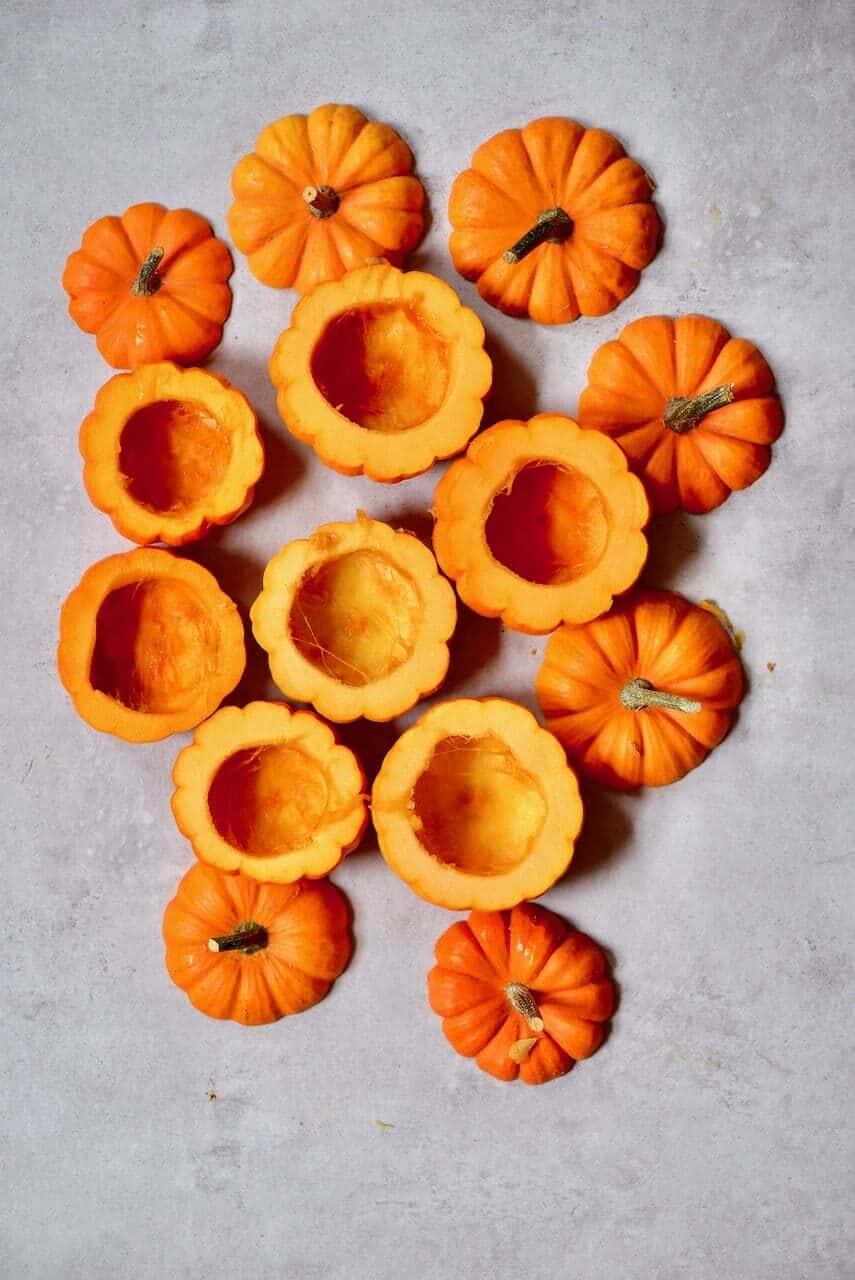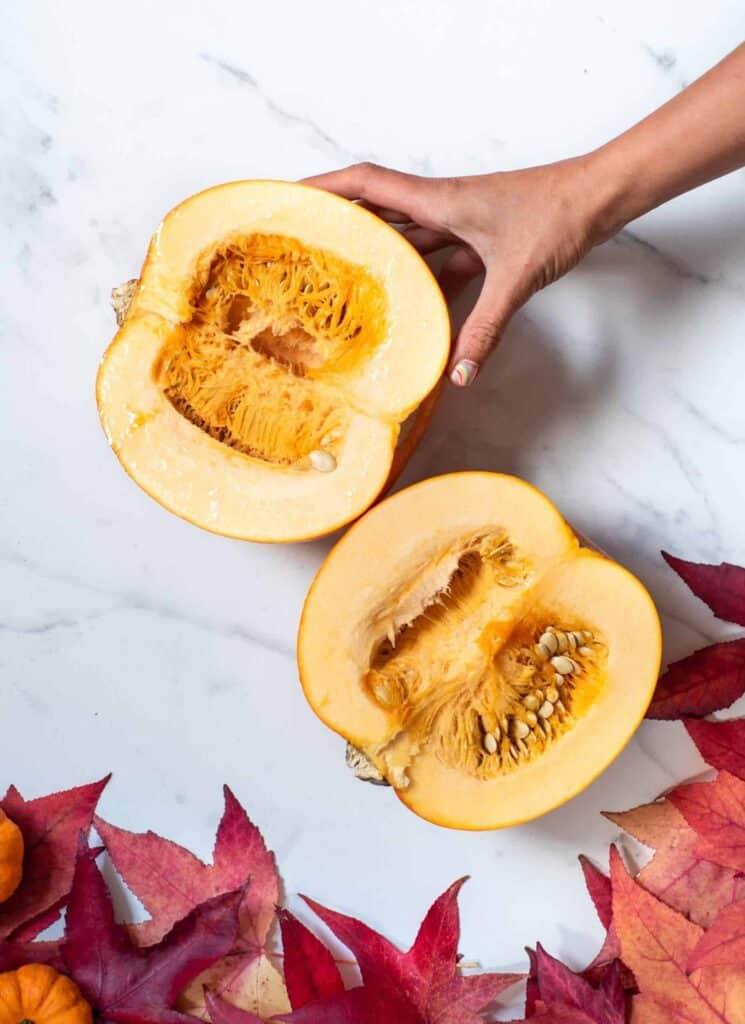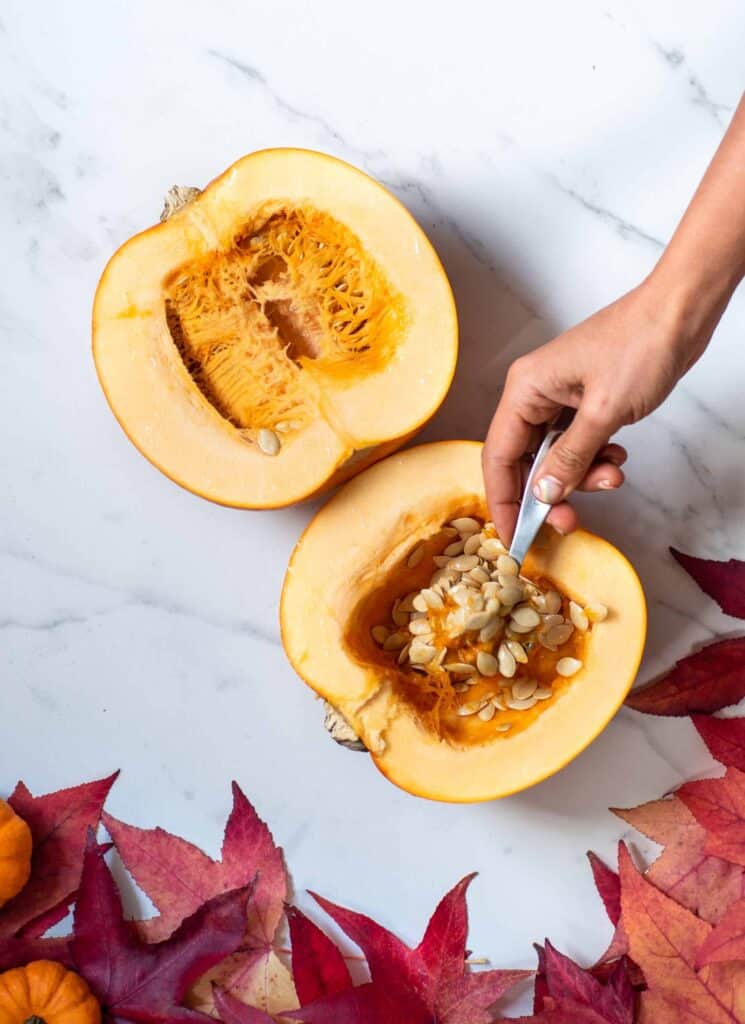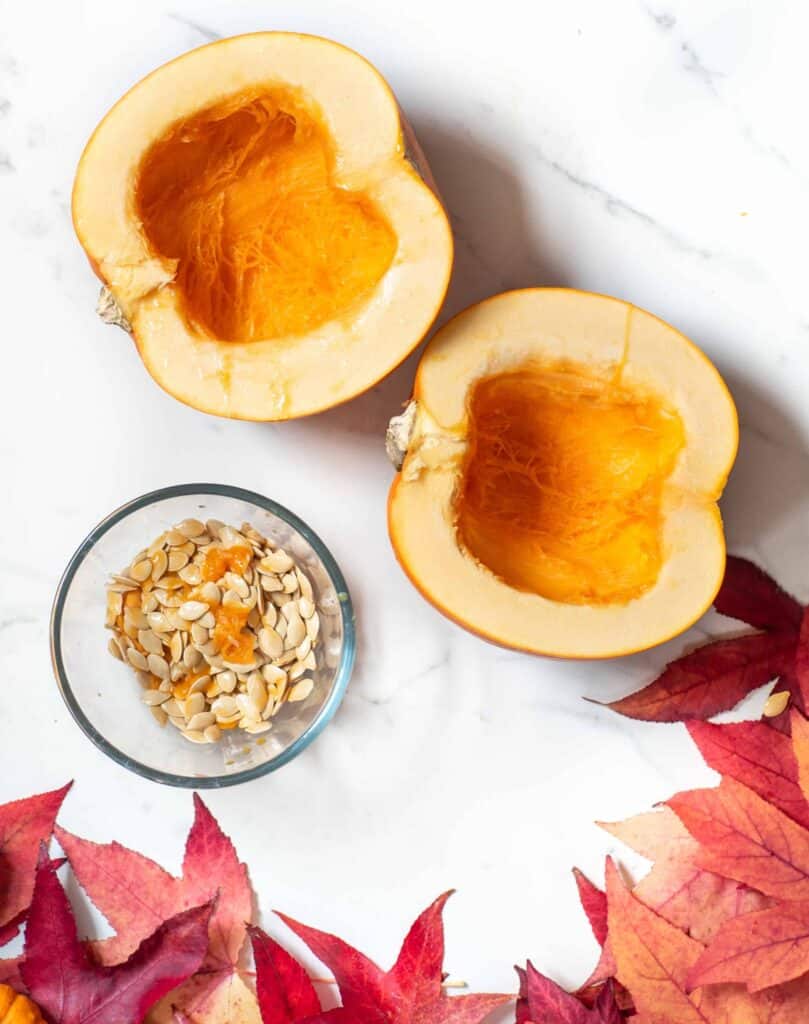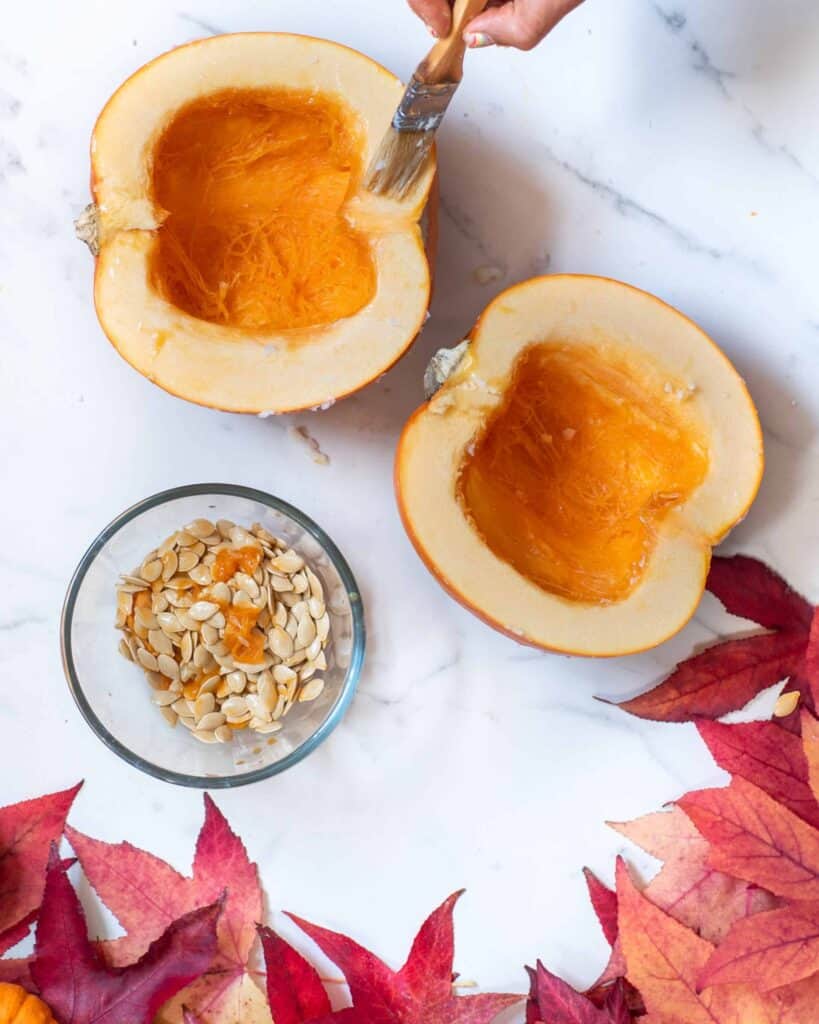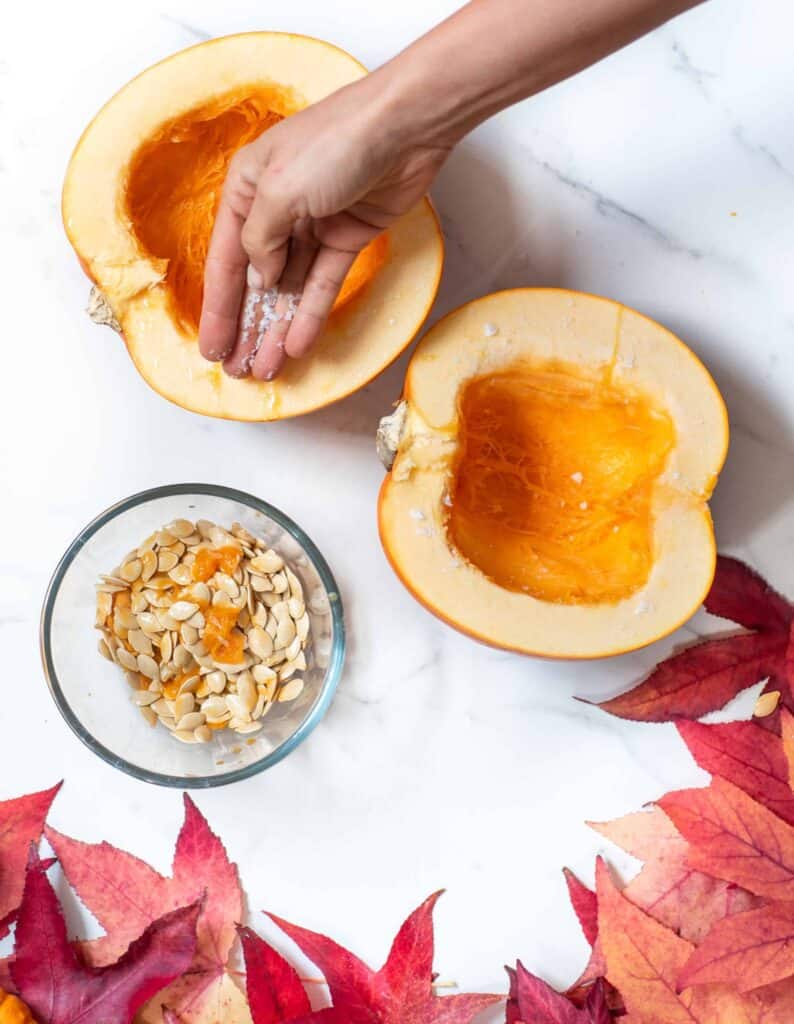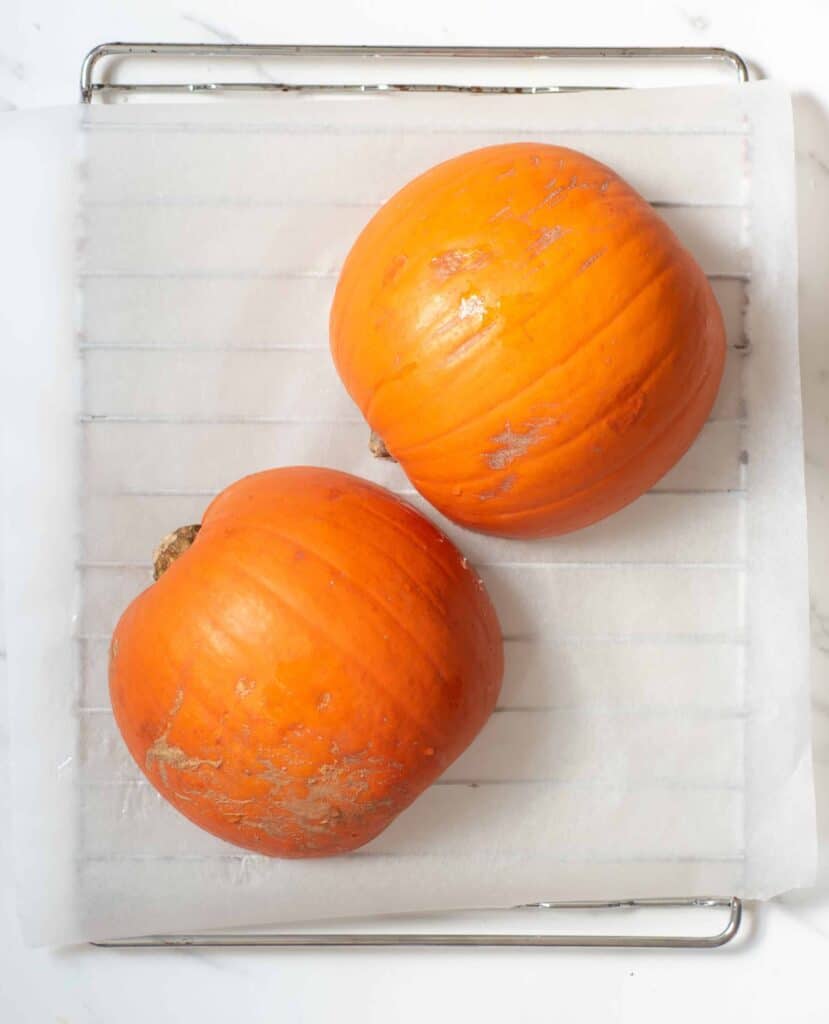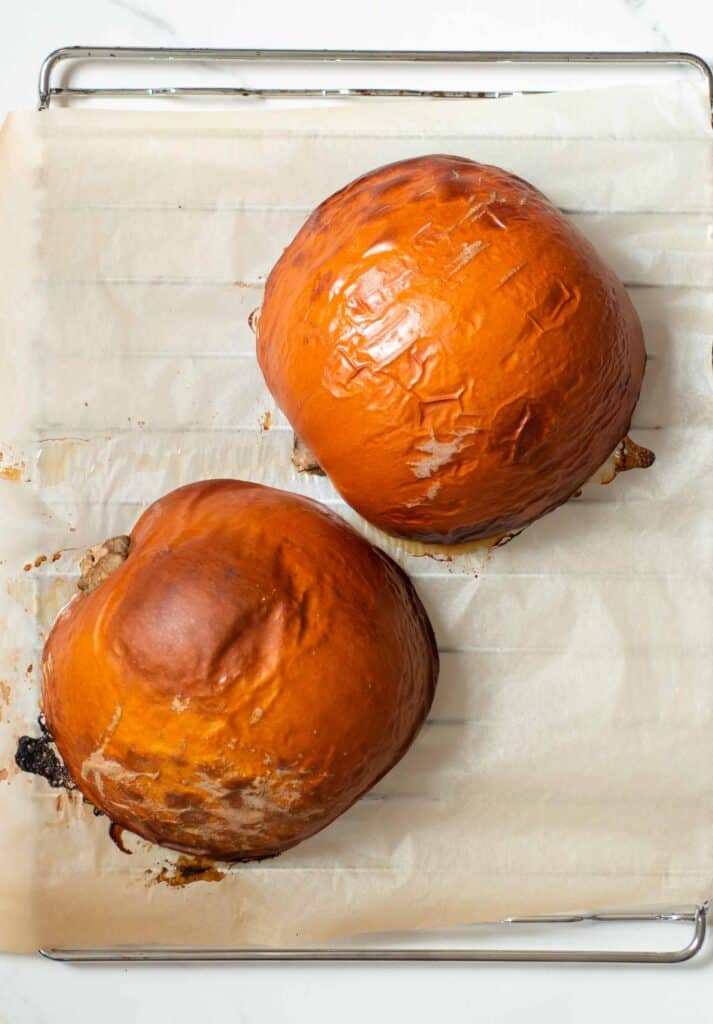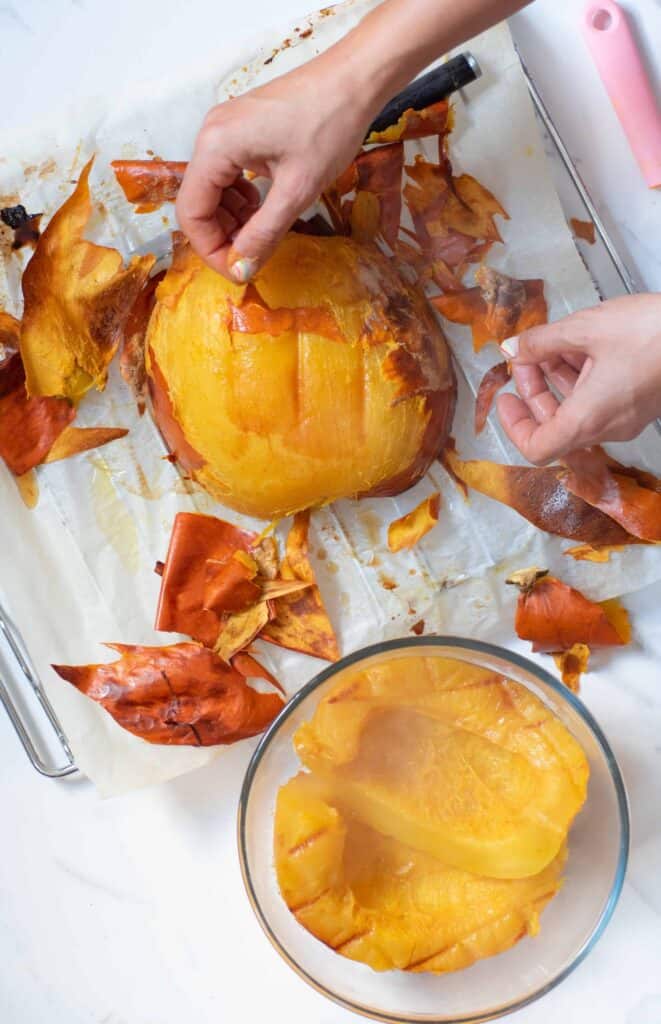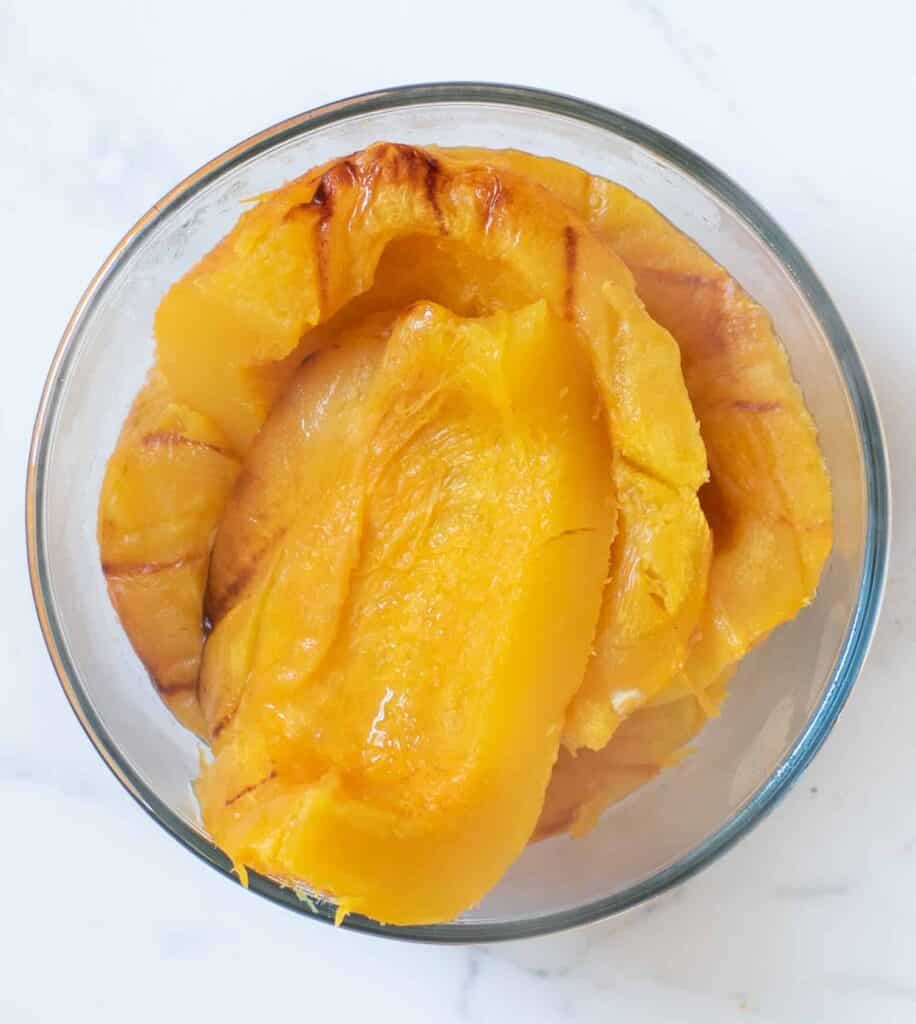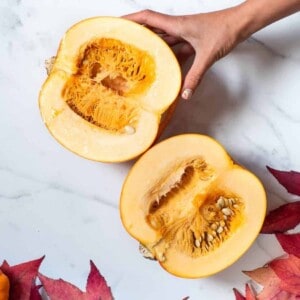Whether you live somewhere where canned pumpkin puree isn’t available, want to avoid preservatives and other ‘nasties’ in canned versions, or – like me – love to make things from scratch, this homemade pumpkin puree is a simple and delicious DIY for you to make now. With a 3-4 month freezer shelf life, homemade pumpkin puree is great for storing when pumpkin isn’t in season. It’s also a great way to use up leftover pumpkins without them risking spoilage while you’re making up your mind about what to do with them. Plus, though there are definitely varieties of pumpkin that work best for this DIY, you can even use leftover jack-o-lantern pumpkins for this DIY – meaning less waste too! If you do live nearby stores that have a ready supply of affordable canned pumpkin, you may wonder why to bother making it yourself. The truth is if you’re making baked goods like muffins and bread – then canned works perfectly fine. However, if you’re making a dish where pumpkin is the star (like this pumpkin pie, soups, or sauces), then homemade pumpkin puree tastes so much better (in my humble opinion, at least)!
What Pumpkin To Use
With this simple puree, the final result you get will largely rely on the fresh pumpkin you use (obviously). While I still go by the advice that this is a great way for using up leftover pumpkins, jack-o-lanterns included, there are some stipulations/tips. If you have your pick of pumpkins to use then leave decorating pumpkins for that purpose (as they’re usually quite watery, not as flavorsome, and don’t have tons of flesh) and instead go for a smaller baking pumpkin. ‘sugar pumpkins‘ or ‘pie pumpkins‘ are what you want to look out for. These are smaller, fleshy varieties with are usually less watery and have better flavor. And, of course, use pumpkins that are rip too. Avoid any that have strange discolorations or bruises on the skin. The best pumpkins will have a deep, hollow sound when knocked with your knuckles.
How To Make Pumpkin Puree
When it comes to making homemade pumpkin puree, there are actually multiple methods; boiling, steaming, microwaving, roasting, etc. Personally, roasting is above and beyond all other methods for multiple reasons. Not only is it less effort in most cases (as there’s no need to pre-peel or cube the pumpkin), but the slight caramelization of the roasting also leads to superior flavor and less watery results.
Ingredients
PumpkinCoconut oilSalt (optional)
The Step By Step Instructions
First wash the outside of your pumpkin and then chop in half. To do this, I like to start at the base and cut through the center. When you reach the stem, you should be able to rip apart the pumpkin by hand. Tip: Use a kitchen tea towel to stop the pumpkin from sliding around while chopping it. Using a spoon, scoop out all the stringy flesh and seeds (The seeds can be kept to be roasted as well!). At this point preheat your oven to 200 degrees. Melt your coconut butter and brush or rub into the flesh. Then sprinkle lightly with some salt (optionally). Bake the pumpkin on a parchment paper lined baking sheet, cut side downwards, until fork tender. Depending on the size of the pumpkin this can take anywhere from 20 – 50 minutes so I’d check after twenty minutes, then every 5 minutes after, to make sure it doesn’t burn at all. Leave to cool slightly so that you’re able to handle it lightly in your hands. At this point you can either peel off the skin or scoop out the flesh with a spoon. I find peeling it far easier though as it comes off in strips and means less waste AND less mess. Blend in a blender or food processor till smooth. This can take some time, due to the stringy consistency of pumpkin. Don’t be afraid to blend for up to five minutes till you have a really smooth pumpkin puree.
How To Thicken
Pumpkins have different levels of moisture, and generally, homemade pumpkin puree tends to be more watery than canned versions. If you find that yours seems a little too liquidy then there are a couple of ‘fixes’/ options. First, you could leave the puree as is and simply reduce some of the extra liquid content in whatever recipe you’re using it for. Alternatively, if you want the puree to have the same thick consistency as canned versions, then allow it to drain in a cheesecloth-lined colander/strainer for 2-3 hours immediately after pureeing. The drained liquid doesn’t need to be discarded either. Using it within smoothies,soups, stews, bread recipes, etc. Finally, instead of draining, you could always pour the puree into a pan and simmer over a low-medium heat until reduced and thickened.
How To Store
Homemade pumpkin puree will store well in an airtight container in the fridge for up to a week. It may separate slightly while chilled. You can either drain the liquid or simply stir it back into the puree before using it.
Can you freeze pumpkin puree?
Yes, you can! It can be stored for between 3-4 months in a freezer-friendly container. I like to make individual portions of the puree by freezing in silicone molds or cupcake pans. Once frozen, they can be transferred to a freezer-safe bag to take up less space. That way you’ll have portioned out pumpkin puree for all your recipe needs. To defrost, simply leave to thaw in the fridge overnight. Once thawed, it’s best to use the puree within a couple of days.
Recipe Notes
You can use this same method for various other winter squash varieties such as acorn squash, butternut squash, etc. The cooking time may vary depending on the size of the pieces you roast. If you’d prefer, you can steam the pumpkin. Peel and cube it first then steam for 10-15 minutes, or until knife-tender. Save the pumpkin seeds to roast/use at a later point (like for this Pumpkin Seed Butter, The Best Seed Cracker Recipe, or 5-Seed DIY Vegan Protein Blend). However, if you don’t plan to use them then you can roast the pumpkin with the seeds/flesh still in. Scoop out the seeds once cooked (when they’re easier to remove). The yield of puree per pumpkin will vary. However, I’ve found a pumpkin just over 3lbs will yield around as much as is in a 15oz can of puree.
How To Use
There are tons of ways to use homemade pumpkin puree including some favorite pumpkin recipe. Like Vegan Pumpkin Pie and within soup recipes (in place of having to roast the pumpkin for it) like this Coconut Curry Pumpkin Soup or Coconut Curry Pumpkin Soup. You can also use some within pasta sauces. Like this Creamy Vegan Mac and Cheese or within dips like this Easy Pumpkin Spice Hummus. Other options include:
Within baked goods like cakes, breads, muffins, etc.Within soups, stews, and risottosFor breakfast dishes like pancakes, waffles, overnight oats, and oatmealFor drinks – including smoothies, pumpkin spice latte, and cocktails.
You can also use pumpkin puree in place of applesauce for vegan baked goods instead of oil. Use at a 1:1 ratio (i.e., 2tbsp oil means 2 tbsp puree). If you give this pumpkin puree recipe a try, then let me know your thoughts and any questions in the comments. Also, feel free to tag me in your recreations @AlphaFoodie.
